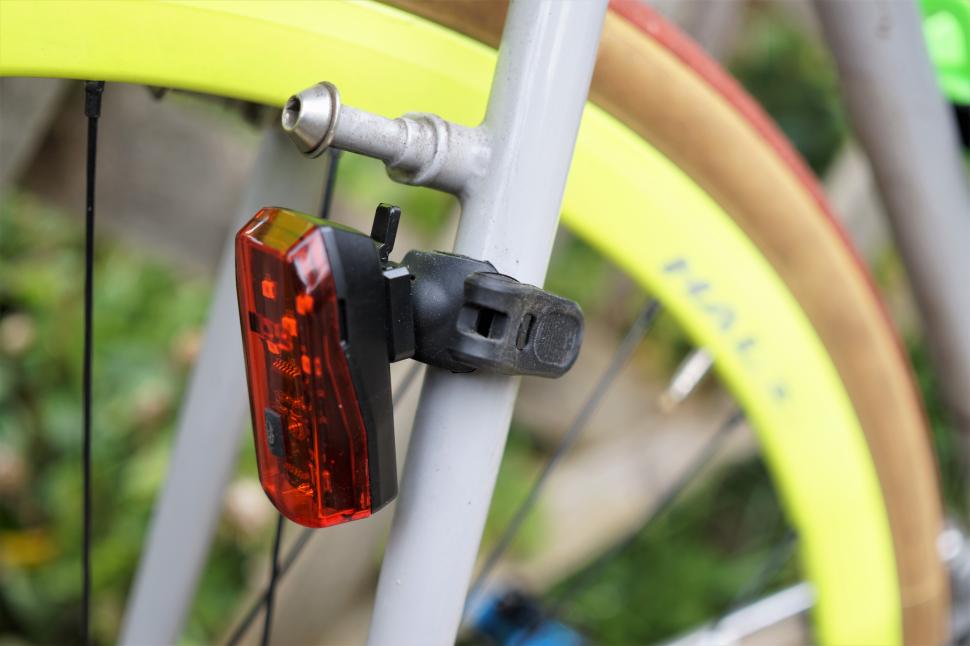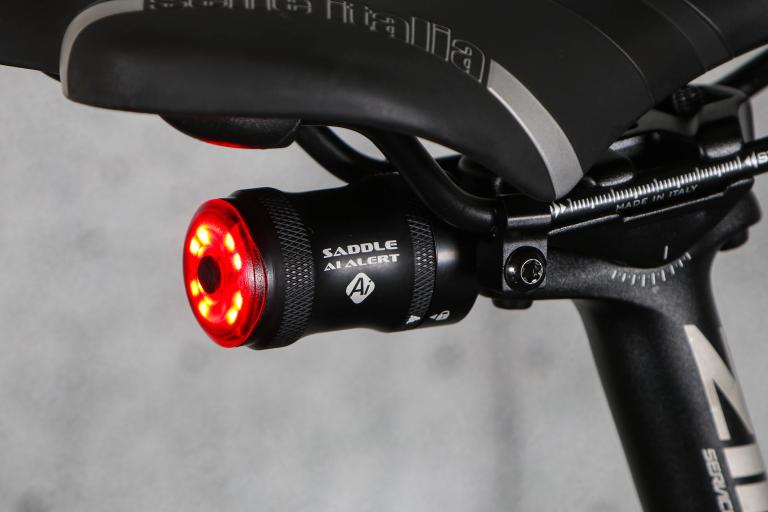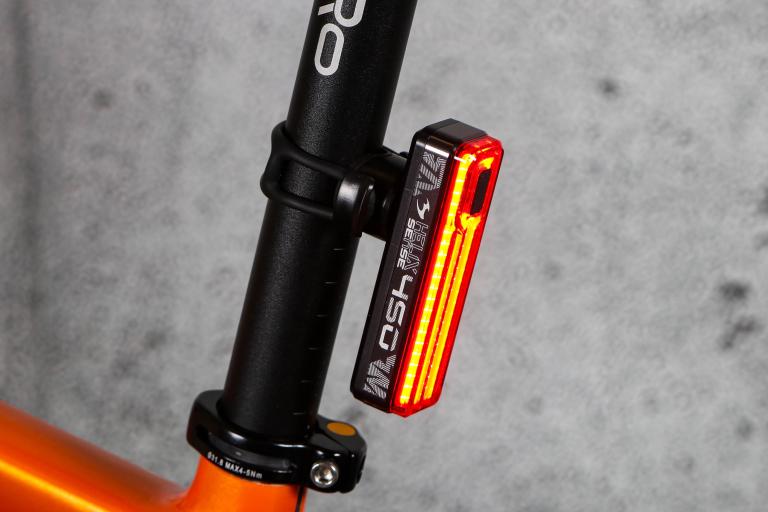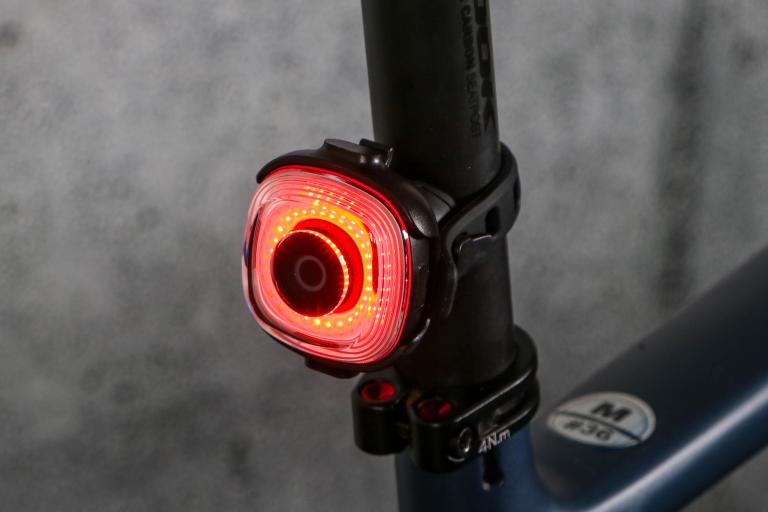- News
- Reviews
- Bikes
- Components
- Bar tape & grips
- Bottom brackets
- Brake & gear cables
- Brake & STI levers
- Brake pads & spares
- Brakes
- Cassettes & freewheels
- Chains
- Chainsets & chainrings
- Derailleurs - front
- Derailleurs - rear
- Forks
- Gear levers & shifters
- Groupsets
- Handlebars & extensions
- Headsets
- Hubs
- Inner tubes
- Pedals
- Quick releases & skewers
- Saddles
- Seatposts
- Stems
- Wheels
- Tyres
- Tubeless valves
- Accessories
- Accessories - misc
- Computer mounts
- Bags
- Bar ends
- Bike bags & cases
- Bottle cages
- Bottles
- Cameras
- Car racks
- Child seats
- Computers
- Glasses
- GPS units
- Helmets
- Lights - front
- Lights - rear
- Lights - sets
- Locks
- Mirrors
- Mudguards
- Racks
- Pumps & CO2 inflators
- Puncture kits
- Reflectives
- Smart watches
- Stands and racks
- Trailers
- Clothing
- Health, fitness and nutrition
- Tools and workshop
- Miscellaneous
- Buyers Guides
- Features
- Forum
- Recommends
- Podcast
review
£14.99
VERDICT:
Quirky, simple and surprisingly bright budget light
Weight:
32g
Contact:
At road.cc every product is thoroughly tested for as long as it takes to get a proper insight into how well it works. Our reviewers are experienced cyclists that we trust to be objective. While we strive to ensure that opinions expressed are backed up by facts, reviews are by their nature an informed opinion, not a definitive verdict. We don't intentionally try to break anything (except locks) but we do try to look for weak points in any design. The overall score is not just an average of the other scores: it reflects both a product's function and value – with value determined by how a product compares with items of similar spec, quality, and price.
What the road.cc scores meanGood scores are more common than bad, because fortunately good products are more common than bad.
- Exceptional
- Excellent
- Very Good
- Good
- Quite good
- Average
- Not so good
- Poor
- Bad
- Appalling
The Oxford Bright Stop Rear LED is a very simple but relatively bright model, which combines a single, steady LED and a five-diode 'brake light'. The two AAA fuel source is slightly old school but frugal when fed NiCd rechargeable batteries.
- Pros: Bright, simple and surprisingly frugal
- Cons: Less potent than some shop brands with similar price tags and better spec
This is a very simple light that took me back a few years. Look into the reinforced plastic lens, which supposedly projects a 270-degree arc of light, and there are old school diodes and printed circuit board. The quality of plastics is good rather than great, but it's survived an accidental drop from 30cm without any obvious signs of scarring.
> Find your nearest dealer here
The diodes sit in a domino formation, the most potent dead centre. Though these look less sophisticated than the COB setup employed in the Xeccon Mars 30, both work to the same principle. Once the internal sensors register deceleration, all the diodes engage.
Performance
In our world of bewildering modes, I found myself intuitively trying to find more than the one on offer. It's literally a choice of on and off. Oxford doesn't cite lumens or any other numbers, but I was pleasantly surprised by the single diode's intensity.
It doesn't rival a 15-lumen flashing/strobing unit, especially on the darkest lanes, but used on its own, the single diode is still extremely prominent from 50 metres. Peripheral bleed is similarly effective.
Ordinarily, visibility tends to dip round town, given the competing illuminations, but the braking function proved surprisingly intense and arguably more potent than the Xeccon Mars 30, mentioned above.
> Buyer's Guide: 16 of the best rear lights for cycling
In common with the Mars, the 'brake light' function isn't that precise. Most notably on a climb and when riding fixed, any loss of momentum induces the five diodes and it takes a few seconds' acceleration before they shut down.
Although technically undesirable and something to knock, this lag actually helped with remaining conspicuous along dark lanes and in stop-go rush hour traffic. Friends also reported that the diodes, though not retina tickling (thus socially acceptable on group outings), are suitably brusque at close quarters.
In a straw poll of friends on two wheels and piloting four, visibility is to around 100 metres on a crystal clear, starry night. Not amazing on paper, perhaps, but reasonable in the real world, especially when price is factored into the equation.
Battery life
Although I love the convenience of USB rechargeable technology, I still have a soft spot for AA/AAA batteries for secondary lighting. They're cheap to run, provided you're using rechargeable NiCd, and can be bought pretty much anywhere. I always carry one on dusk til dawn all-nighters.
The OEM batteries lasted 90 minutes tops before plunging me into (temporary) darkness. Fresh fare from pound shops returned between 10.5 and 12 hours, subjected to a diet of stop-go commuting and longer, steady jaunts, a loosely similar story with better quality NiCd rechargeable batteries.
Waterproofing
I'm told the light meets IPX4, which is essentially bog-standard rainfall. At this price point I'm used to the crude but effective 'elastic band' type seal but none were evident here. As a precaution, I'd recommend adding a lick of silicone grease (or Vaseline) to the contacts, especially if you're shunning mudguards or mounting it on the seatstays. That said, it hasn't missed a beat during some heavy showers. I've whipped it off when giving bikes a very sudsy wash down, mind.
Mount
The reassuringly sturdy rubberised stabiliser and watch-strap type mount offers gentle yet reliable tenure to most diameters of tubing, the full zodiac of seatposts (25.4 to 31.8mm) and even pencil thin steel frame tubes.
There is some scope for helmet mounting too, which proved quite handy for roads with a high number of HGVs and other large vehicles. Some suggested a clothing clip was a missed opportunity, but that's not a deal-breaker for me.
Switch
The switch is a small black rubbery affair that engages with a positive click: no hint of accidental power-ups when the light's been holidaying in pockets or bouncing around in messenger bags/luggage. Locating it in the dark, wearing full-finger gloves, proved trickier than some, but the subtly raised profile isn't overly faffy, either.
Conclusion
The Oxford light is a simple but surprisingly bright unit that could work out quite frugal, used with rechargeable batteries. If the stop-light function isn't a priority, there are five-mode, 15-lumen, USB rechargeable, shop-branded models for similar money, and with superior build quality and weather resistance. It's a useful concept, though, the stop light, and has serious potential for trailers and tagalongs, though I can't help thinking this technology is yet to meet its true potential.
Verdict
Quirky, simple and surprisingly bright budget light
road.cc test report
Make and model: Oxford Bright Stop Rear LED
Size tested: 5 Led
Tell us what the light is for, and who it's aimed at. What do the manufacturers say about it? How does that compare to your own feelings about it?
Oxford describes it as a single high-power LED with 5 LED 'Stop' Light.
I'd say it's a simple and surprisingly effective light, but I'd be inclined to run it in conjunction with a flashing unit along unlit roads.
Tell us some more about the technical aspects of the light?
From Oxford:
Stop light illuminates when braking
Tool-free seatpost fitting
Battery type 2 x AAA (supplied)
MODES & RUN TIME: Run time dependant on stop light use"
Rate the light for quality of construction:
6/10
Sturdy enough.
Rate the light for design and ease of use. How simple was the light to use?
10/10
One mode, on/off, doesn't get simpler than this (in the most positive sense).
Rate the light for the design and usability of the clamping system/s
8/10
Simple-to-use rubberised "watch strap" design that securely tethers to the full zodiac of seatpost diameters and seatstays.
Rate the light for waterproofing. How did it stand up to the elements?
6/10
Meets IPX4 and coped fine with showers and heavier rain, but I've not subjected it to my hosepipe test, and been inclined to remove it during sudsy bucket washes.
Rate the light for battery life. How long did it last? How long did it take to recharge?
6/10
Poor in the first instance but this was attributable to the supplied batteries. Oxford doesn't cite an approximate run-time but in a mix of urban and open road use it's returned 12 hours.
Rate the light for performance:
6/10
Better than I was expecting.
Rate the light for durability:
6/10
What I'd expect from this end of the market and by no means poor.
Rate the light for weight:
7/10
Rate the light for value:
5/10
It's not bad value, but even allowing for the "braking" function's relative intensity, some multi-mode, shop-branded competition have an edge on this front.
Tell us how the light performed overall when used for its designed purpose
Overall, the Stop light has grown on me. The slightly old school single mode and single diode is brighter than I was expecting and when flanked by the other five, quite impressive. It's not a brake-light in the car/motorcycle sense - it's not on/off - but the lag is actually very welcome, providing some more bite. Though I've predominantly run it on the bike, the strap will entertain some helmets - handy round town. Run-times are middling and will depend upon how much stop-start work you do. However 10.5-12 hours from top quality rechargeable batteries is reasonable and economical in the longer run.
Tell us what you particularly liked about the light
Surprisingly bright, simple and effective.
Tell us what you particularly disliked about the light
Single, steady mode is less conspicuous along unlit, open roads, so I would pair it with a blinker if this was my regular riding.
How does the price compare to that of similar products in the market, including ones recently tested on road.cc?
Reasonable relative to specification and build quality.
Did you enjoy using the light? Yes
Would you consider buying the light? Possibly
Would you recommend the light to a friend? Yes, but probably as a secondary system, outside of suburban contexts.
Use this box to explain your overall score
It's a surprisingly bright, simple light that doesn't feel gimmicky; build quality is good, rather than great, so overall I'd say it's above average.
About the tester
Age: 45
I usually ride: Rough Stuff Tourer Based around 4130 Univega mtb Frameset My best bike is: 1955 Holdsworth Road Path and several others including cross & traditional road
I've been riding for: Over 20 years I ride: Most days I would class myself as: Experienced
I regularly do the following types of riding: cyclo cross, commuting, touring, fixed/singlespeed, mountain biking
Shaun Audane is a freelance writer/product tester with over twenty-eight years riding experience, the last twelve (120,000 miles) spent putting bikes and kit through their paces for a variety of publications. Previous generations of his family worked at manufacturing's sharp end, thus Shaun can weld, has a sound understanding of frame building practice and a preference for steel or titanium framesets.
Citing Richard Ballantine and an Au pair as his earliest cycling influences, he is presently writing a cycling book with particular focus upon women, families and disabled audiences (Having been a registered care manager and coached children at Herne Hill Velodrome in earlier careers)
Latest Comments
- HarrogateSpa 1 sec ago
It was a narrow lane, so it didn't really matter whether Vine was 'drifting' or not - there was no overtaking someone on a bike without moving into...
- dubwise 11 min 23 sec ago
That's some headline, Poggi didn't deny MVDP anything. He basically destroyed them all.
- cmedred 21 min 45 sec ago
Yup, the Tour should long ago have gone down the finisher lists year by year until it found riders who hadn't doped and then awarded them the...
- mark1a 1 hour 34 min ago
I'm just someone on the internet with an opinion like everyone else here!...
- Secret_squirrel 1 hour 51 min ago
Why has such a fugly and massive rear light got such poor run times? My tiny Flare RT has 12hrs at 45 lmns.
- GMBasix 2 hours 18 min ago
Bronze = lasts longer than a cable tie
- Secret_squirrel 2 hours 27 min ago
You're missing the point. The cassette is unforgiveable when aimed at this market and the width of the tyres not much better. You shouldnt have...
- Secret_squirrel 3 hours 8 min ago
Its tragic but worth noting that this is just statistics playing out. Same happens at most mass participation sports events. The London Marathon...









Add new comment
3 comments
Yes I agree, I have a few old cateye TL-LD-600 and TL-LD610 lights, that both use AAA alkalines and a TL-LD1100 that runs on 2AA batteries. As Mike said above, Poundshop Kodak alkaline batteries are great, but I change mine once a year just to be on the safe side. Allways run one of the above along with my old battery in the seatpack Magicshine MJ-818. I even have a Poundland front light with modified stronger bracket for commuting as a backup to compliment my Solarstorm X2, again running on AAA Poundland Kodak batteries.
I kind of miss the ease of use of AA/AAA duracell batteries, my bag light would work for months, with the battery checker on the battery I could tell if there was any juice left. A long predictable death too, not the quick death of a rechargeable. Front lights, I get it, but on little red blinkies I don't mind running disposables. My original fibre flare will do the whole of the winter.
Me too. Discount shop Kodak AAAs are a quid a dozen and will last me two+ years of occasional commuting. I doubt any rechargeable cells can beat that and, like you ktache, I hate the way they just die.